Welcome to Countdown to CHIRP, a wonderfully nerdy blog series about the writing process behind my February 2020 MG novel, CHIRP. Here’s a little about the book from Bloomsbury, so you’ll understand what I’m talking about when I share all the nitty-gritty writing and revision details…
 When Mia moves to Vermont the summer after seventh grade, she’s recovering from the broken arm she got falling off a balance beam. And packed away in the moving boxes under her clothes and gymnastics trophies is a secret she’d rather forget.
When Mia moves to Vermont the summer after seventh grade, she’s recovering from the broken arm she got falling off a balance beam. And packed away in the moving boxes under her clothes and gymnastics trophies is a secret she’d rather forget.
Mia’s change in scenery brings day camp, new friends, and time with her beloved grandmother. But Gram is convinced someone is trying to destroy her cricket farm. Is it sabotage or is Gram’s thinking impaired from the stroke she suffered months ago? Mia and her friends set out to investigate, but can they uncover the truth in time to save Gram’s farm? And will that discovery empower Mia to confront the secret she’s been hiding–and find the courage she never knew she had?
In a compelling story rich with friendship, science, and summer fun, a girl finds her voice while navigating the joys and challenges of growing up.
Whenever I visit schools to talk about the writing process, I share something that surprises a lot of kids: I spent way, way more time revising than I do writing my first draft. After several rounds of revising on my own, I’ll reach out to writer-friends for feedback. Then – and at this point, we’re usually talking about draft five or six – I send the manuscript to my editor. Mary Kate Castellani is my Bloomsbury editor who worked on CHIRP. When the manuscript landed in her in-box, she read it through, making notes, and then wrote up a many-page editorial letter with feedback.
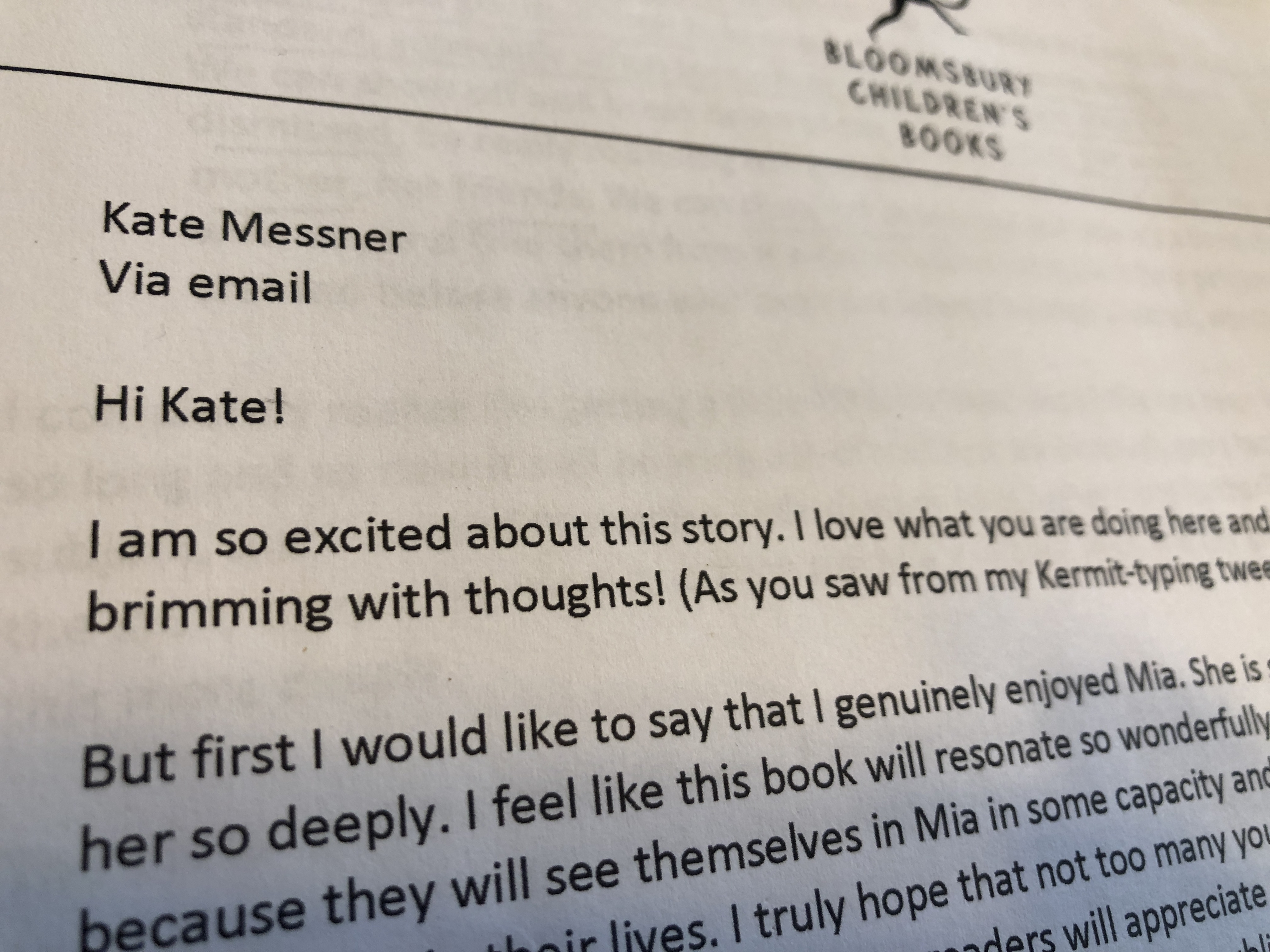
When I visit schools to talk about my writing process, I point out that these editorial letters always begin the same way — with a paragraph about how happy my editor is to work with me and how much she loves the book. “And then,” I tell the kids, “she writes EIGHT MORE PAGES about all the things I need to work on before the book gets published!” They gasp and laugh at this. But really, that’s how it works. And the truth is, that encouraging first paragraph helps to convince me that I’m a strong enough writer to tackle all the work that’s still to come.
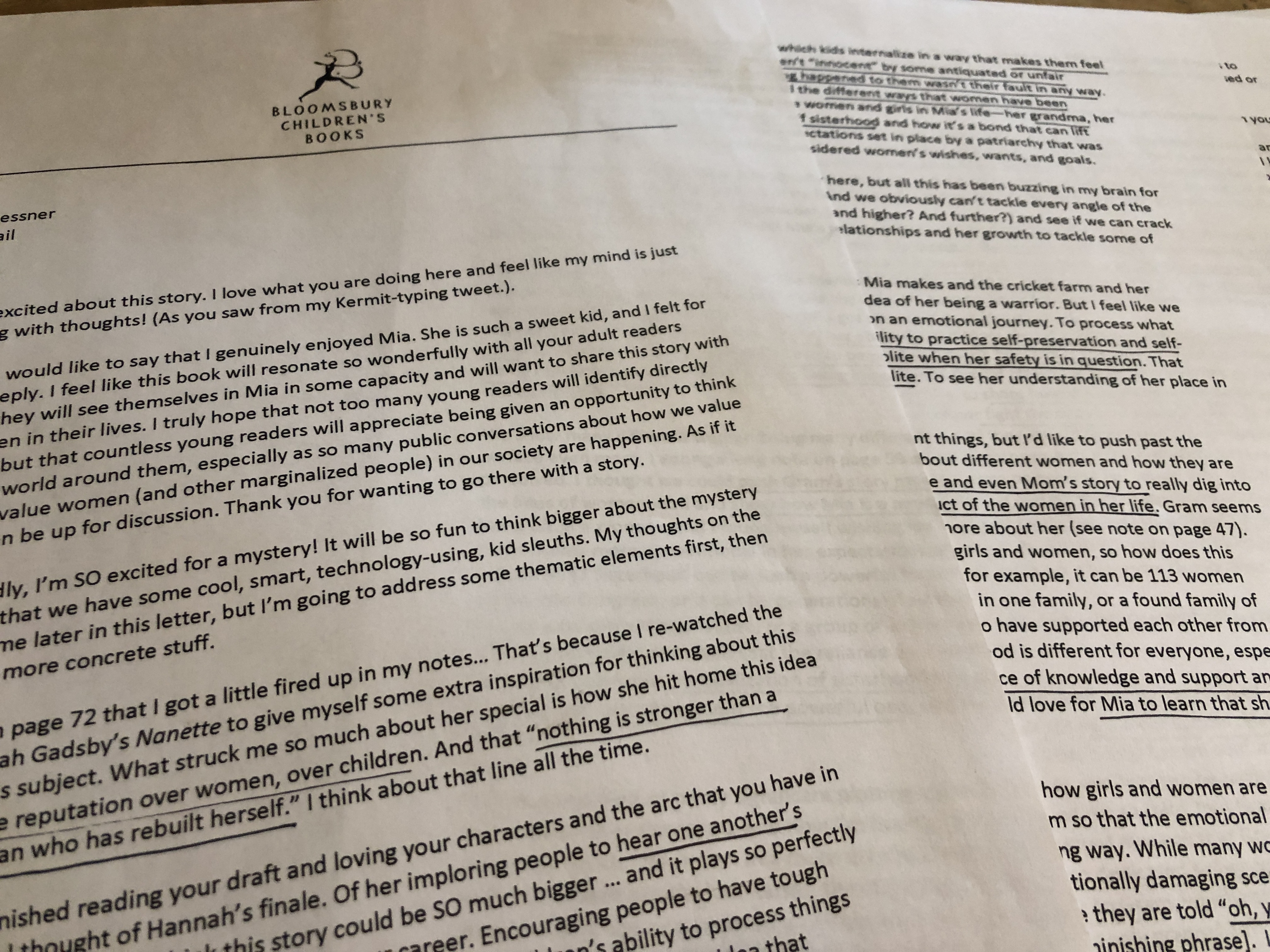
If you look at the letter, you’ll see that there are some lines underlined. That’s something that I do on my second read of a new editorial letter, to help me distill all those good ideas into something more streamlined and manageable for me as a writer.
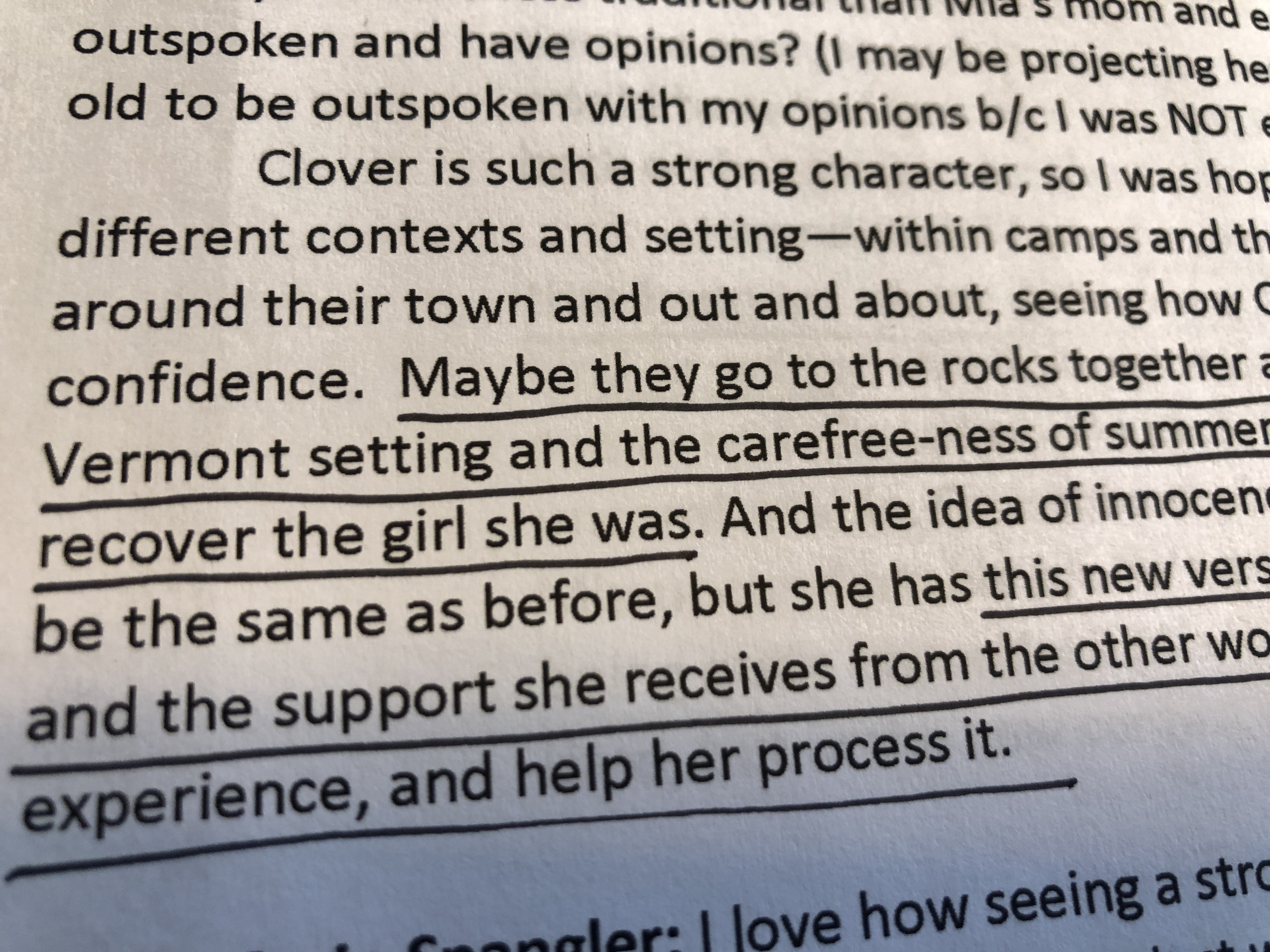
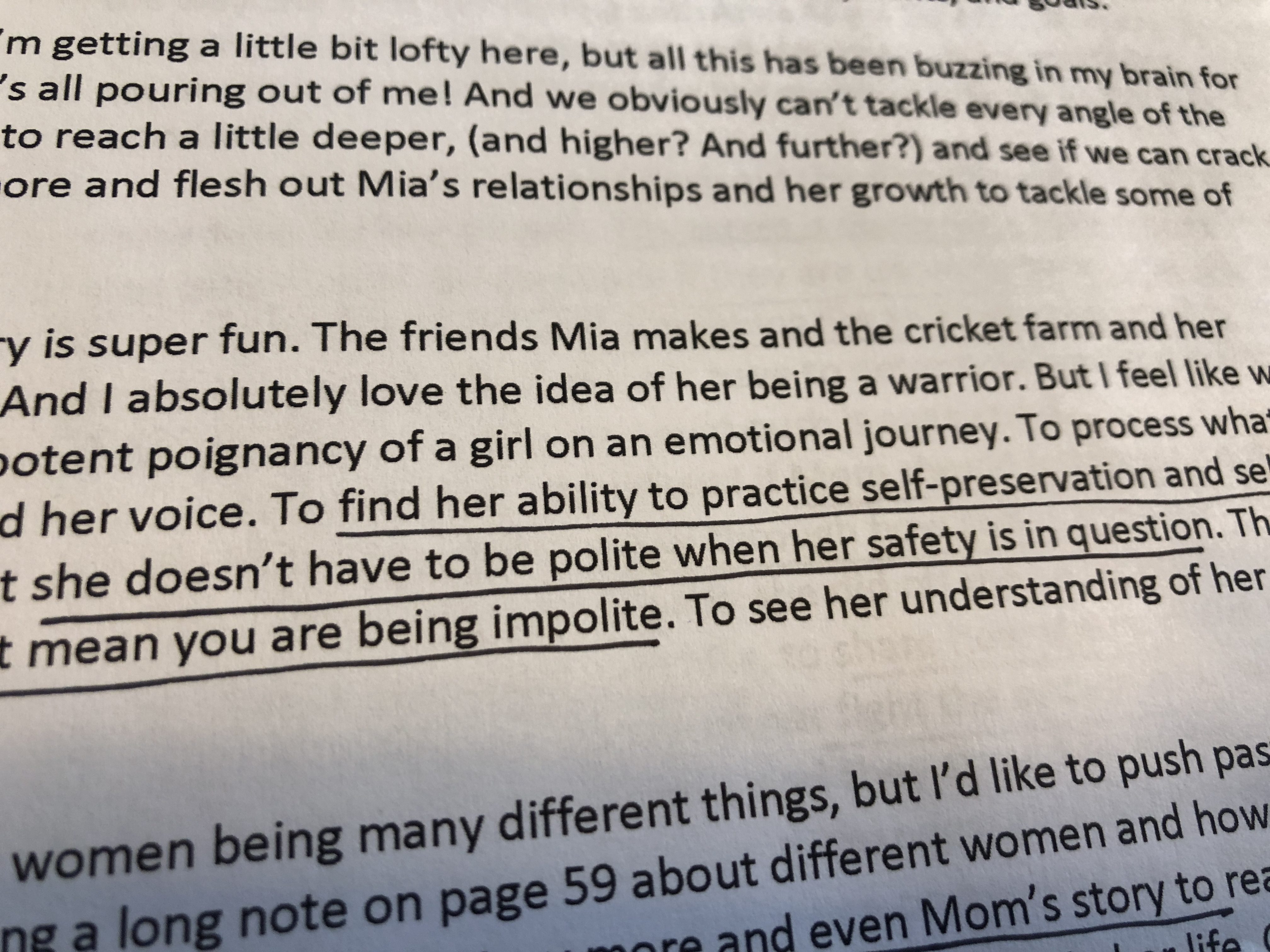
I used that underlined letter to make myself a new revision to-do list. It includes all the big-picture things that I want to work on, based on feedback in the editorial letter. I can’t show you the whole list because it contains a couple of major spoilers, but here’s a spoiler-free section.
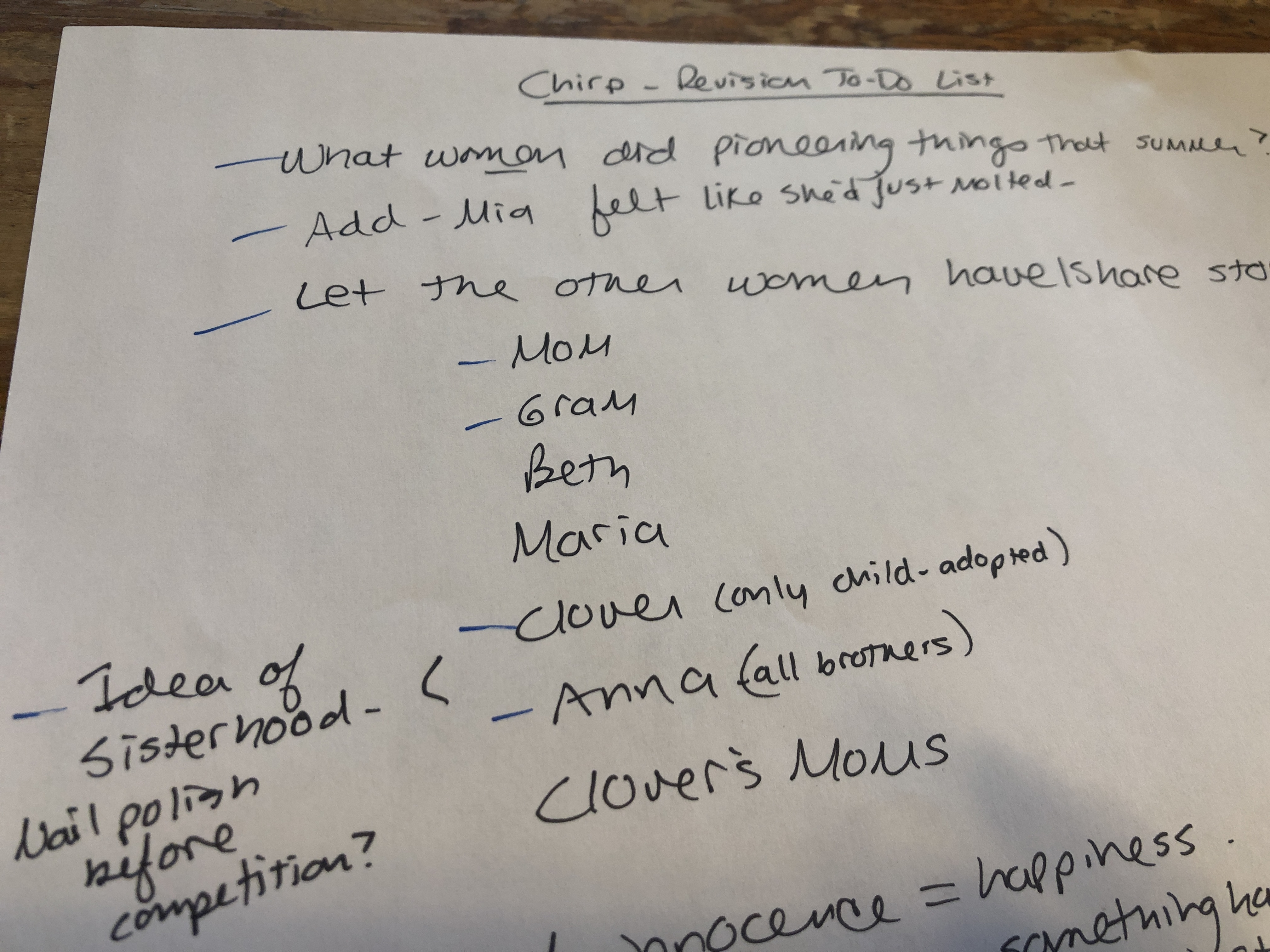
One of the things Mary Kate talked about in her editorial letter for CHIRP was the novel’s opening, so one of my first orders of business was to scribble some notes on the manuscript about how I might rework it.
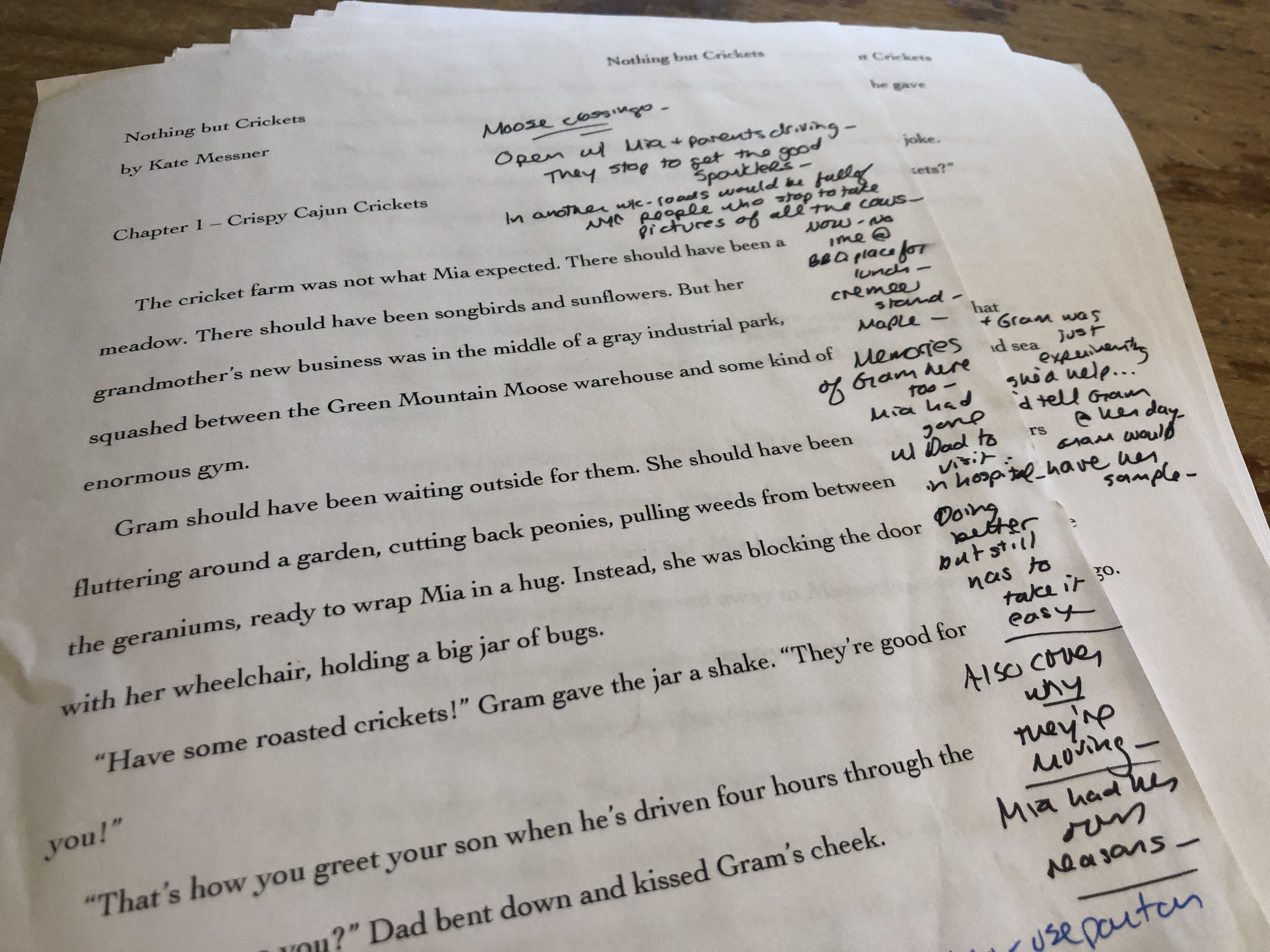
In addition to writing that big letter, Mary Kate also makes notes on the manuscript, asking specific questions about specific passages and making more notes.
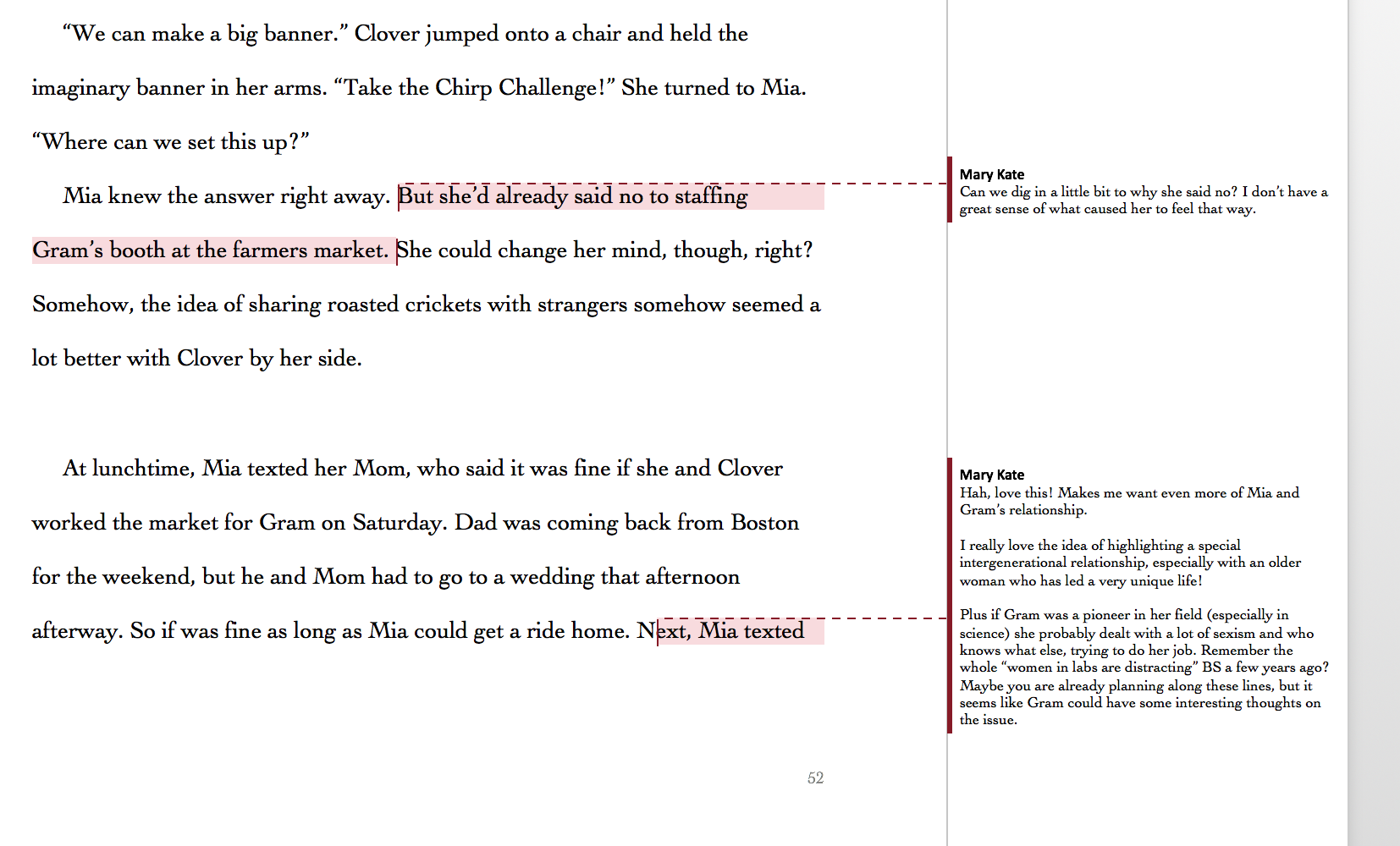
As I revise, I go back and forth between the manuscript with these comments & suggestions and that big-picture letter, distilled in my to-do list. It usually takes at least two more revision passes to incorporate all of this feedback.
At school visits, kids often ask, “What happens if you don’t want to make one of the changes she wants? What if you don’t agree with her suggestions?” This happens sometimes, and it all works out. Sometimes, I’ll write back with a comment that says “I don’t really want to do this because….” and then we’ll talk about it. Usually, my editor’s suggestion is in response to a real issue – something in the manuscript that’s not quite working. Even if I don’t love her idea for fixing it, I can still find value in the suggestion, recognize that there might be an issue, and brainstorm some other ways to work on it. There’s a lot of back and forth.
The other thing kids ask at school visits is this: “Doesn’t that big fat letter make you mad when you already worked so hard on the book?” I don’t lie when I answer this one. There are times when the editorial letter feels overwhelming and makes me sigh. But once I’ve had time to do my underlining and list-making and thinking, the emotion I land on is always gratitude. Because a book that I’d worked on as hard as I could now has a chance to be even better than I could make it on my own. By the time I send that manuscript to my editor, I’m out of ideas. I’ve used every tool in my revision toolbox, and I’m out of tricks. But when that letter arrives, suddenly, I have another chance and some new thoughts to work with. So ultimately, it’s a pretty exciting part of the writing process.
Once the revision back and forth is all done, the manuscript moves on to copy edits – a process I’ll talk about in a future post.
For now, I’d love it if you’d consider pre-ordering CHIRP. If you do that through my local indie, The Bookstore Plus, I’ll personalize and sign your copy to be mailed out on release day. And wherever you pre-order, Bloomsbury will send you a special gift – a CHIRP poster and a class set of bookmarks to share! Just fill out this form after you’ve pre-ordered.
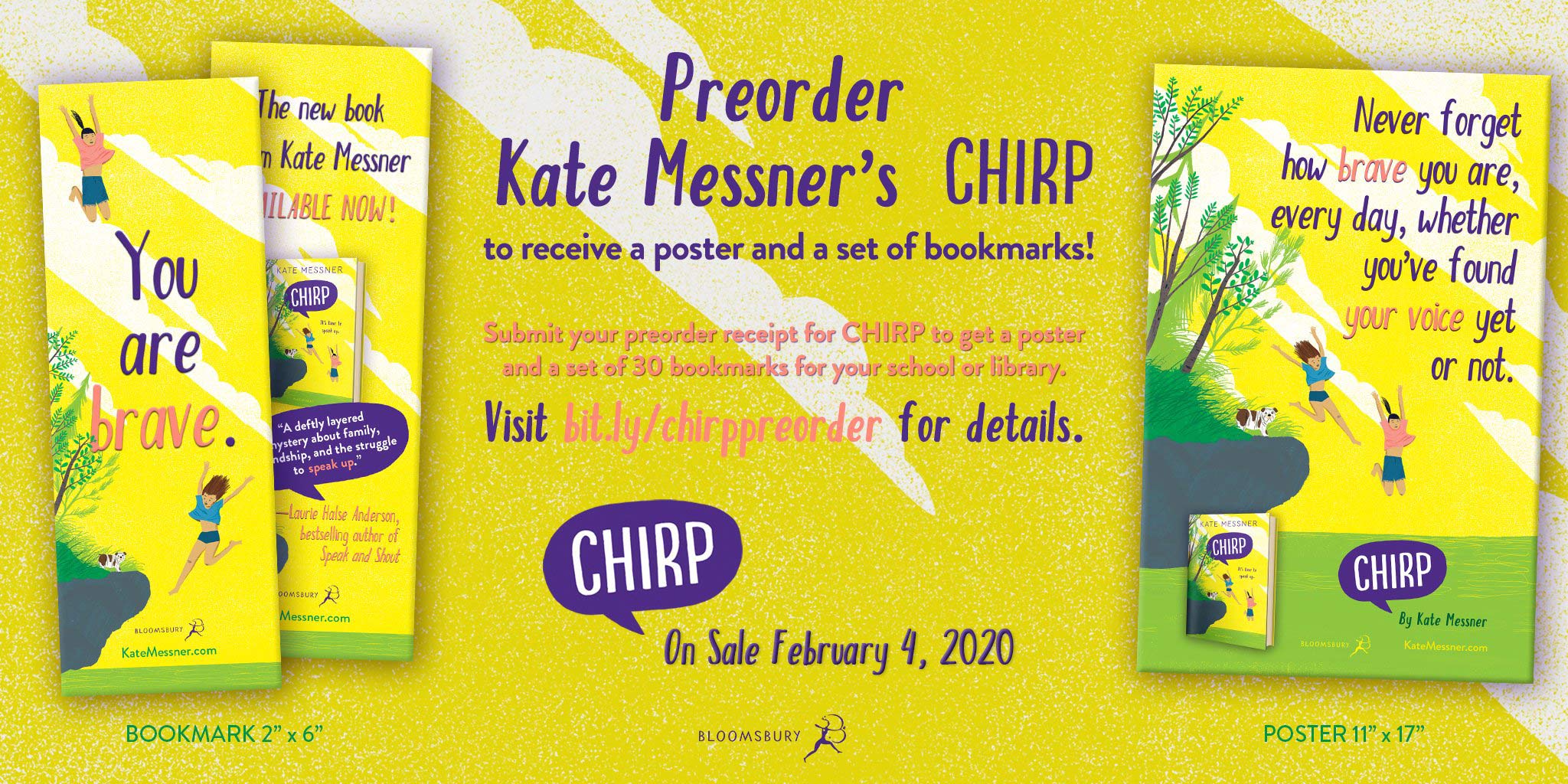
Thanks so much for taking the time to read about CHIRP. I’m so hopeful that this book will find the readers who need it, and I’m grateful for the early praise it’s garnered from readers and reviewers alike…
“Kate Messner strikes the perfect balance of joy, pain, and strength in this deftly layered mystery about family, friendship, and the struggle to speak up.” – Laurie Halse Anderson, bestselling author of SPEAK and SHOUT
“Chirp is so many things: a mystery, a family story, and a story of the power of friendship. It’s about learning to speak out when it seems the whole world would rather you shut up. Sure to be passed from kid to kid to kid” – Laura Ruby, National Book Award Finalist and author of the York Trilogy
“Once again, Kate Messner has written a book that will be a dear and important friend to her readers. A loving and compelling ode to the joy of friendship, the many kinds of strength, and the everyday bravery of girls.” – Anne Ursu, author of THE LOST GIRL
“Messner deftly weaves together myriad complex plot threads to form a captivating whole. . . . Rich, timely, and beautifully written.” – Starred Review, Kirkus Reviews
“Messner addresses #MeToo themes authentically and with care as her story moves toward empowerment: Mia displays fear and confusion alongside a hope to reclaim the strength she once felt as a gymnast. Layering mystery elements, strong and myriad female characters, and a poignant analogy involving chirp-less female crickets, Messner gently guides Mia on a journey of resilience that both comforts and inspires.”
– Starred Review, Publishers Weekly
“Messner honors middle graders by exploring important, relevant issues at their level of understanding. This book will prompt discussions of gender inequality, consent, and sexual abuse. A must purchase.” – Starred Review, School Library Connection




